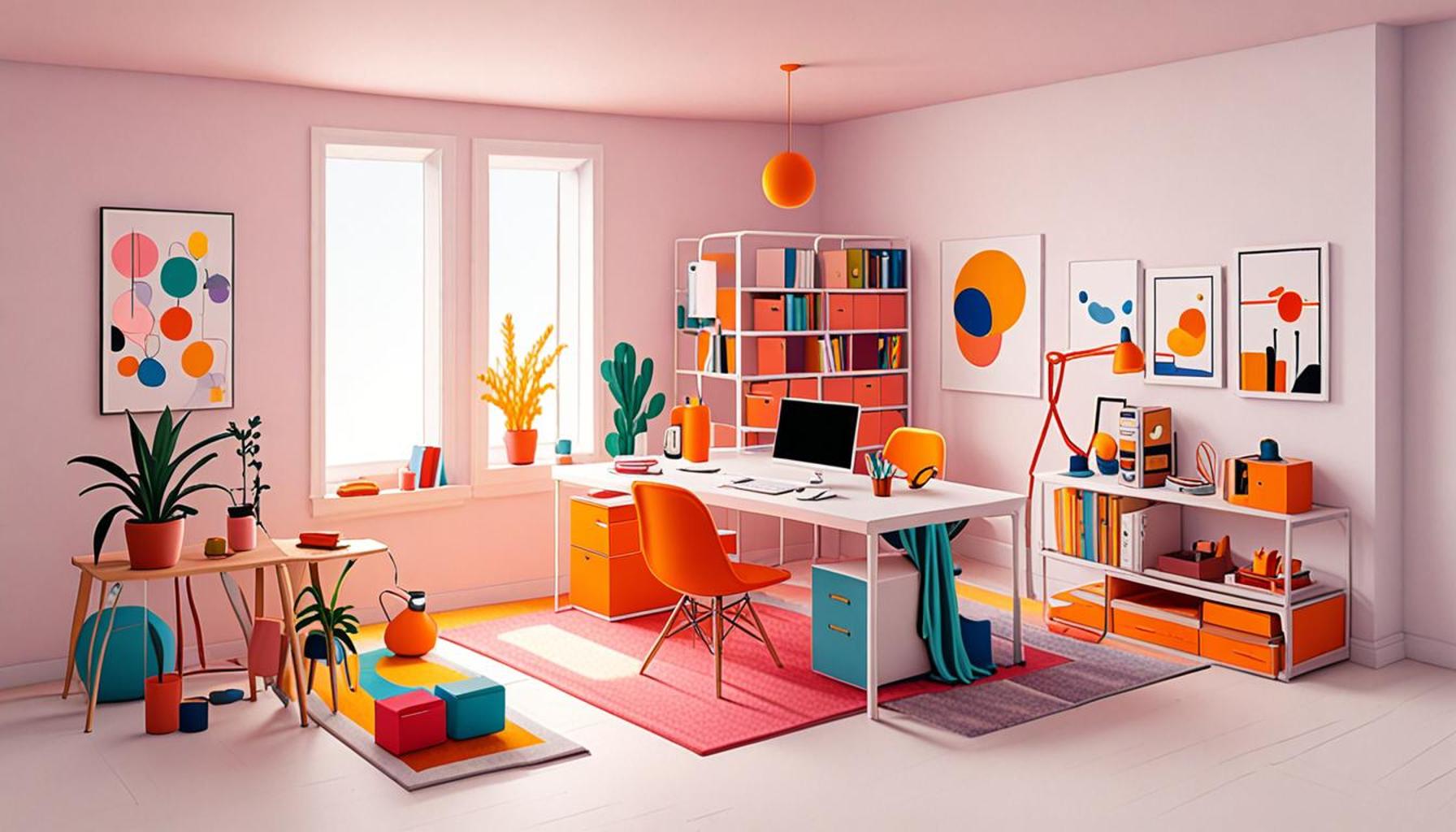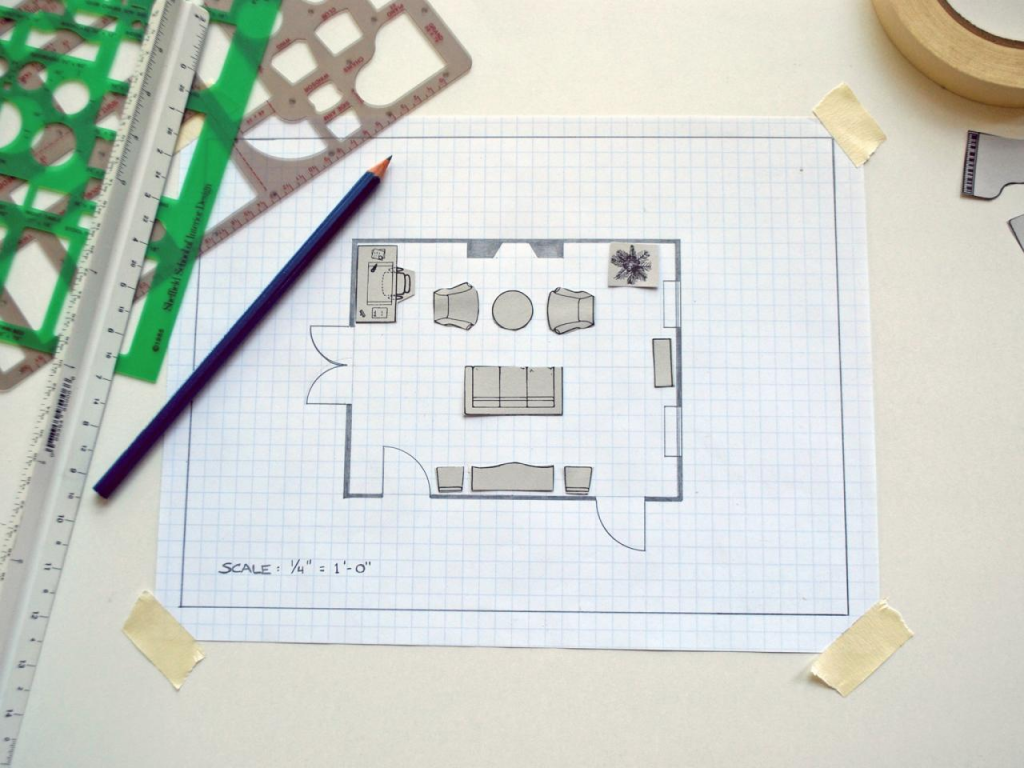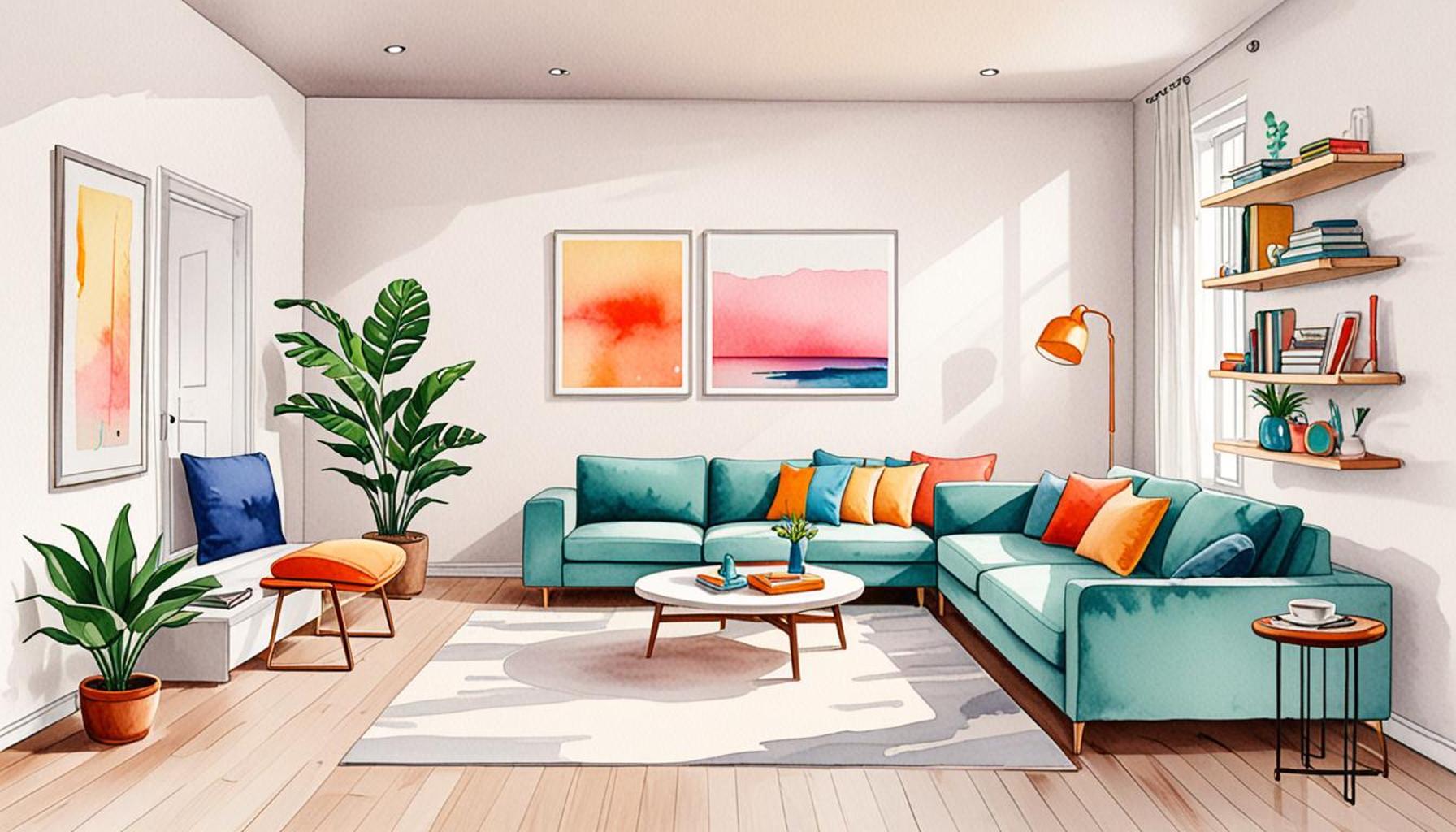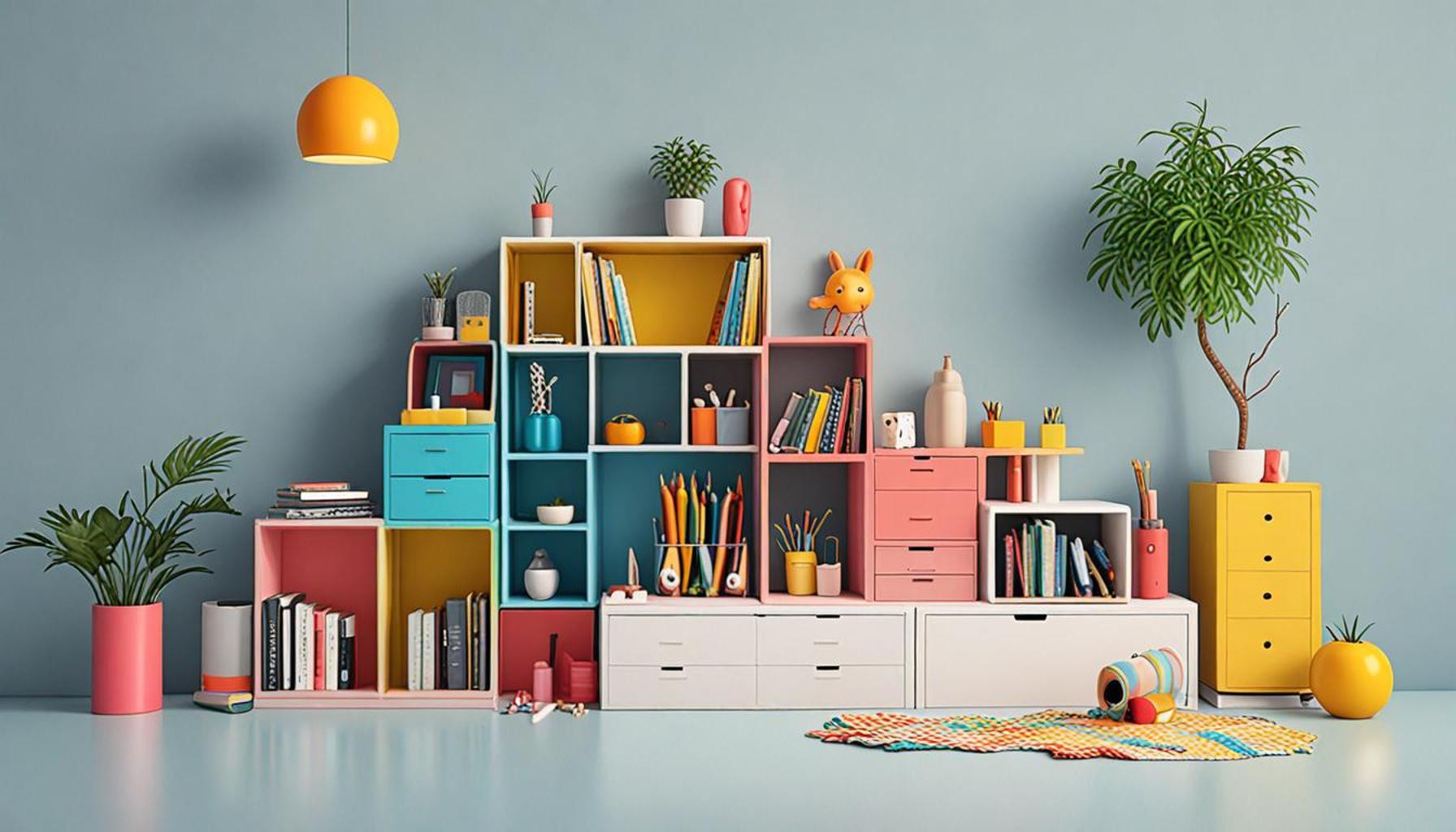Creating Functional Spaces: The Importance of Planning in Optimizing Minimalist Environments

The Essential Guide to Functional Spaces
As urban living becomes increasingly synonymous with limited square footage, the appeal of creating spaces that emphasize both design and practicality intensifies. In this context, the philosophy of minimalism emerges as a compelling solution. Minimalism encourages individuals not only to downsize their belongings but also to curate their living environments in a manner that prioritizes function without sacrificing style. This endeavor involves thoughtful planning and a crystal-clear vision of how one wishes to utilize their space.
Key Elements of Minimalist Design
- Decluttering: The foundation of minimalism lies in the art of decluttering. This process not only involves removing extraneous items but also requires individuals to engage in self-reflection regarding their possessions. For instance, the widely popular Marie Kondo method encourages keeping only items that “spark joy.” By fostering a mindset of intentionality, residents can create a serene atmosphere that enhances both comfort and focus.
- Multi-functional furniture: The trend of investing in multi-functional furniture items has gained momentum, particularly in smaller living spaces. Furniture such as a sofa bed or an extendable dining table can significantly increase usability. Brands like IKEA have popularized such pieces, making it easy for homeowners to transition rooms for diverse purposes while maintaining an uncluttered aesthetic.
- Strategic layout: The arrangement of furniture can greatly influence the flow of a lived-in space. Minimalist design emphasizes open layouts where movement is unobstructed, and busy areas like living rooms remain welcoming. For example, arranging seating in a circle can promote conversation and togetherness, while also avoiding the feeling of cramped quarters.
Delving into minimalist planning reveals numerous advantages that extend beyond mere aesthetics. Carefully orchestrated spaces improve overall functionality and encourage a higher quality of life. Here are some noteworthy benefits:
- Enhanced efficiency: When spaces are tailored to personal requirements, everything from daily routines to spontaneous gatherings becomes more seamless. Individuals can move freely without navigating around surplus items.
- Reduced stress: A clean and organized environment is pivotal for mental clarity. Research indicates that clutter can lead to feelings of stress and anxiety. Embracing minimalism can foster tranquility by promoting a tidy atmosphere.
- Increased creativity: Interestingly, minimalist spaces can stimulate creativity. The absence of excess can help individuals concentrate better, enabling them to think outside the box without distractions.
By embracing the principles of minimalist design, one can create a space that is not only visually appealing but also deeply functional. This journey goes beyond mere decoration; it becomes an exploration of how simplicity can transform a living environment into a dynamic and purposeful haven. As we continue to investigate the elements of functional spaces, the potential to unveil innovative strategies that enrich our daily lives is truly limitless.
DISCOVER MORE: Click here to learn how technology can transform minimalist living

Understanding the Core Principles of Space Optimization
Creating functional spaces within minimalist environments requires a keen understanding of various design principles. As individuals seek to maximize their limited square footage, the act of planning evolves into a critical component of achieving not only aesthetic appeal but also practical usability. Effective planning incorporates several strategies that allow for a harmonious blend of simplicity and functionality.
Identifying Purposeful Zones
One of the first steps in optimizing a minimalist environment is identifying distinct zones within the space. Each area of a home should serve a specific purpose, and understanding how these zones interact can significantly enhance functionality. Consider the following areas commonly found in minimalist homes:
- Living Zone: This area is usually where family gathers or guests are entertained. It should encourage interaction while remaining uncluttered. Thoughtful seating arrangements can facilitate conversations, making it an inviting space.
- Work Zone: With the rise of remote work, creating a dedicated workspace is essential. This doesn’t necessarily mean sacrificing any aesthetic values; a compact desk and ergonomic chair can define a work area while maintaining overall flow.
- Utility Zone: This includes areas like kitchens or laundry rooms. Efficiency in these zones often comes from strategic storage solutions that incorporate multipurpose items, allowing the space to remain functional without compromising on a neat appearance.
By clearly defining and organizing these zones, residents can streamline their daily routines and enhance overall productivity. When each area is tailored to its primary function, spaces not only become more efficient but also more enjoyable to inhabit.
Utilizing Vertical Space
In a world of limited floor space, the vertical dimension often holds untapped potential. Many minimalist designs successfully utilize wall space to create functional environments. This can be achieved through:
- Wall-mounted Storage: Shelves and cabinets can be installed higher up, leaving floor areas open and uncluttered.
- Hanging Décor: Items like mirrors, art pieces, or even functional elements like hooks can be hung on walls, adding style while preserving floor space.
- Lofted Beds: In bedrooms, lofted or elevated beds create valuable floor space for other activities or storage solutions beneath.
Utilizing vertical space not only maximizes potential but also enhances the perception of openness in a room, making even the smallest environments feel more expansive. This practice aligns perfectly with minimalist philosophy, where less truly becomes more.
In our exploration of how to create functional spaces within minimalist environments, it’s evident that a deep commitment to planning lays the crucial foundation. By thoughtfully designating zones and utilizing vertical space creatively, individuals can achieve a serene and orderly environment. This path to minimalism inspires not only a sense of calm but also an appreciation for the simplicity that enhances daily life.
Creating a minimalist environment involves more than simply reducing clutter; it requires a strategic approach to space planning that maximizes functionality while maintaining aesthetic appeal. When designing such spaces, understanding the principles of efficient layout is essential. A thoughtfully arranged layout ensures that every item has a purpose and a place, which not only enhances the visual harmony of the area but also improves daily usability.One of the key factors in creating functional spaces is the concept of zoning. This involves dividing a larger area into smaller, designated zones tailored to specific activities, such as work, relaxation, or socializing. Zoning can significantly optimize how effectively a space serves its purpose without the need for excessive furnishings or decor. For instance, incorporating a multifunctional piece of furniture that can adapt to different activities in a specific zone can save both space and enhance functionality.Lighting also plays a crucial role in optimizing environments. Strategically placed natural and artificial light sources can alter the mood of a space while emphasizing its minimalist design. Utilizing natural light not only brings warmth to a minimalist environment but also makes it feel more expansive and inviting. On the other hand, adjustable ambient lighting can cater to different needs and activities throughout the day, creating a flexible atmosphere that supports various lifestyles.Furthermore, the choice of materials used in a minimalist space can greatly influence its functional capabilities. Durable, high-quality materials that are easy to maintain add to the longevity of the environment while ensuring that the aesthetics remain intact. Sustainable options not only resonate with the minimalist philosophy but also promote an eco-friendly lifestyle, making it an attractive choice for those interested in sustainability.Lastly, incorporating smart technology into minimalist designs can enhance functionality without adding to visual clutter. Smart home devices can streamline everyday tasks, from adjusting temperatures and lighting to controlling security systems, making a minimalist home even more efficient and comfortable.The interplay of these elements—layout, zoning, lighting, materials, and technology—creates a foundation for optimizing minimalist environments. By prioritizing function and thoughtful planning, homeowners can achieve a serene, uncluttered atmosphere that promotes both relaxation and productivity. Exploring how these components work together can elevate any space into a truly functional and inviting minimalist haven.
DIVE DEEPER: Click here to discover more
Incorporating Multi-Functional Furniture
In the pursuit of minimalist living, furniture that serves multiple purposes becomes invaluable. Multi-functional furniture cleverly combines aesthetics with practicality, allowing homeowners to maximize their space without sacrificing style. By incorporating pieces that can serve more than one role, individuals gain flexibility in how they use their environment. Here are several effective strategies:
- Sofa Beds: These versatile pieces work as both comfortable seating during the day and a cozy bed at night. Ideal for small apartments or guest rooms, sofa beds can transform the function of a room while maintaining a minimalist vibe.
- Coffee Tables with Storage: Selecting a coffee table that includes hidden storage compartments can help eliminate clutter. It stores items like books, blankets, or games, ensuring that essential items are readily available yet out of sight.
- Foldable Furniture: Tables and chairs that can be folded away are perfect for adapting spaces for various activities. For example, a foldable dining table can expand when entertaining guests and collapse when not in use, preserving floor space.
Each of these options exemplifies the essence of minimalism: when furniture serves multiple purposes, it reduces the need for excess items, ultimately contributing to a cleaner, more organized living space. In addition, these pieces often bring an element of surprise and creativity, enhancing the overall aesthetic appeal.
Mindful Color and Material Choices
The colors and materials selected for a minimalist environment play a crucial role in its functionality. A well-planned color scheme can influence the perception of space, making it feel larger or more relaxed. Lighter shades, such as whites, soft grays, and pastel tones, tend to reflect light and create an open atmosphere. Conversely, darker hues can make a space feel cozier but may require careful balance to avoid overwhelming the senses.
Additionally, the choice of materials can affect both the practical use and visual appeal of a minimalist space. The use of natural materials, such as wood or stone, adds warmth and texture, which can enhance the overall ambiance of a home. Thoughtful combinations—like pairing wooden furniture with metal accents—can introduce visual interest while remaining true to the minimalist philosophy.
Strategic Lighting Solutions
Lighting is another fundamental aspect of planning when creating functional spaces within minimalist environments. Good lighting not only serves practical purposes, illuminating areas throughout the day, but also plays a critical role in establishing mood and enhancing design elements. Some strategies to consider include:
- Layered Lighting: Use a combination of ambient, task, and accent lighting to create depth and interest. For example, pendant lights can provide illumination over workspaces while floor lamps can soften the atmosphere in living areas.
- Natural Light: Maximizing natural light can greatly influence how a space feels. Utilizing sheer window treatments can allow sunlight to flow freely into the rooms, enriching the experience and reducing the need for artificial lighting.
- Adjustable Fixtures: Incorporating fixtures with dimming options allows for flexibility in adjusting brightness based on the time of day or activity, further aligning with the concept of a multi-functional space.
In summary, it is evident that creating a functional minimalist environment hinges largely on meticulous planning and intentional choices. By embracing multi-functional furniture, mindful color and material decisions, and strategic lighting solutions, inhabitants can transform their living spaces into efficient, harmonious areas that promote simplicity and functionality. The detailed incorporation of these elements invites exploration, suggesting a lifestyle that values thoughtful design and conscious living.
DISCOVER MORE: Click here for insights on digitalization and decluttering
Conclusion: Embracing Thoughtful Design in Minimalist Spaces
In conclusion, mastering the art of creating functional spaces within minimalist environments requires a deep understanding of planning and intentional design. As explored throughout this article, the strategic incorporation of multi-functional furniture, mindful choices in color and materials, and innovative lighting solutions are vital components that contribute to a harmonious and efficient living experience. These elements work collectively, not only to conserve space but also to foster a sense of tranquility and order that many seek in today’s fast-paced world.
The journey towards optimizing minimalist spaces is not merely about decluttering, but rather about curating an atmosphere that encourages both aesthetic appeal and functional relevance. A well-planned environment enhances everyday living, allowing individuals to enjoy the seamless transition between work, leisure, and rest. By committing to thoughtful design, homeowners can cultivate a lifestyle that emphasizes simplicity, creativity, and functionality.
Ultimately, the importance of planning in minimalist environments cannot be overstated. With meaningful adjustments and well-considered choices, our living spaces can become reflections of our values and preferences while offering the flexibility needed to adapt to our ever-changing lives. Thus, those interested in elevating their own spaces are encouraged to embrace the principles discussed here, transforming the ordinary into extraordinary—one intentional decision at a time.



